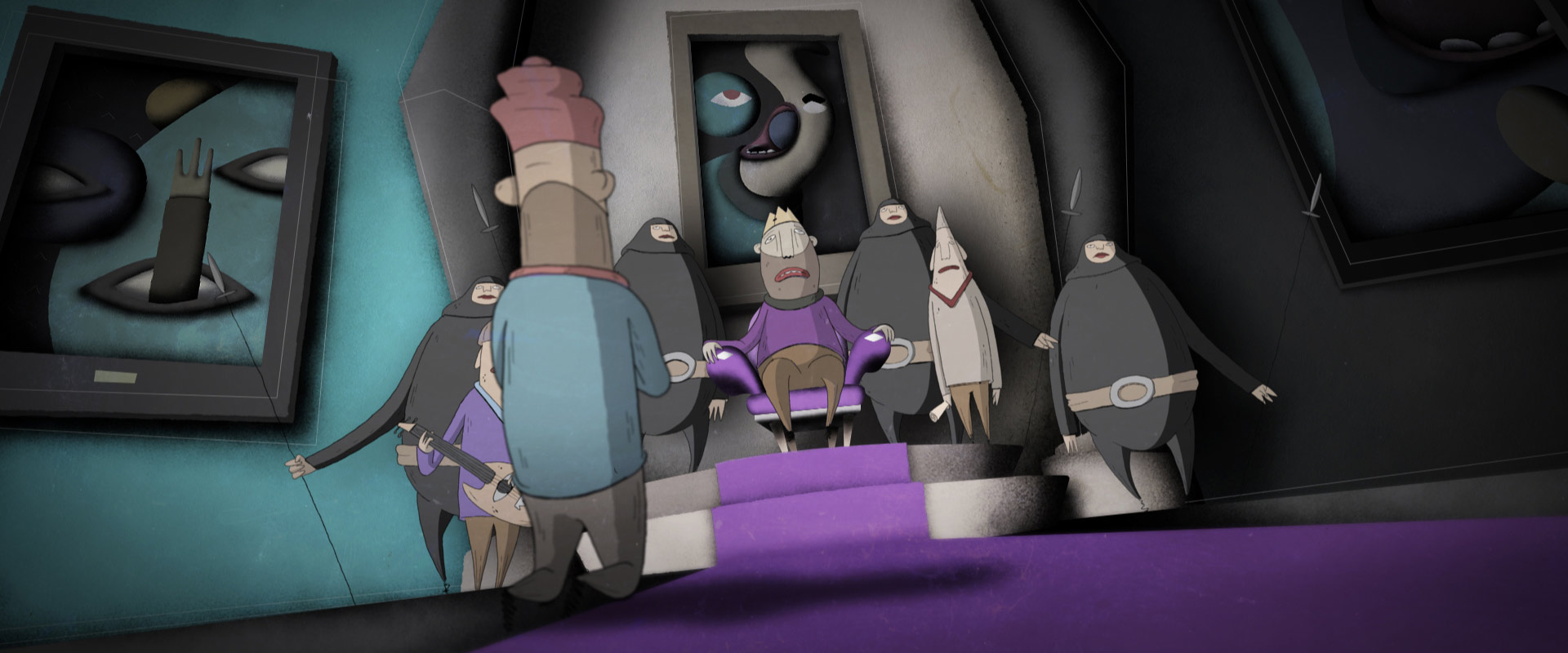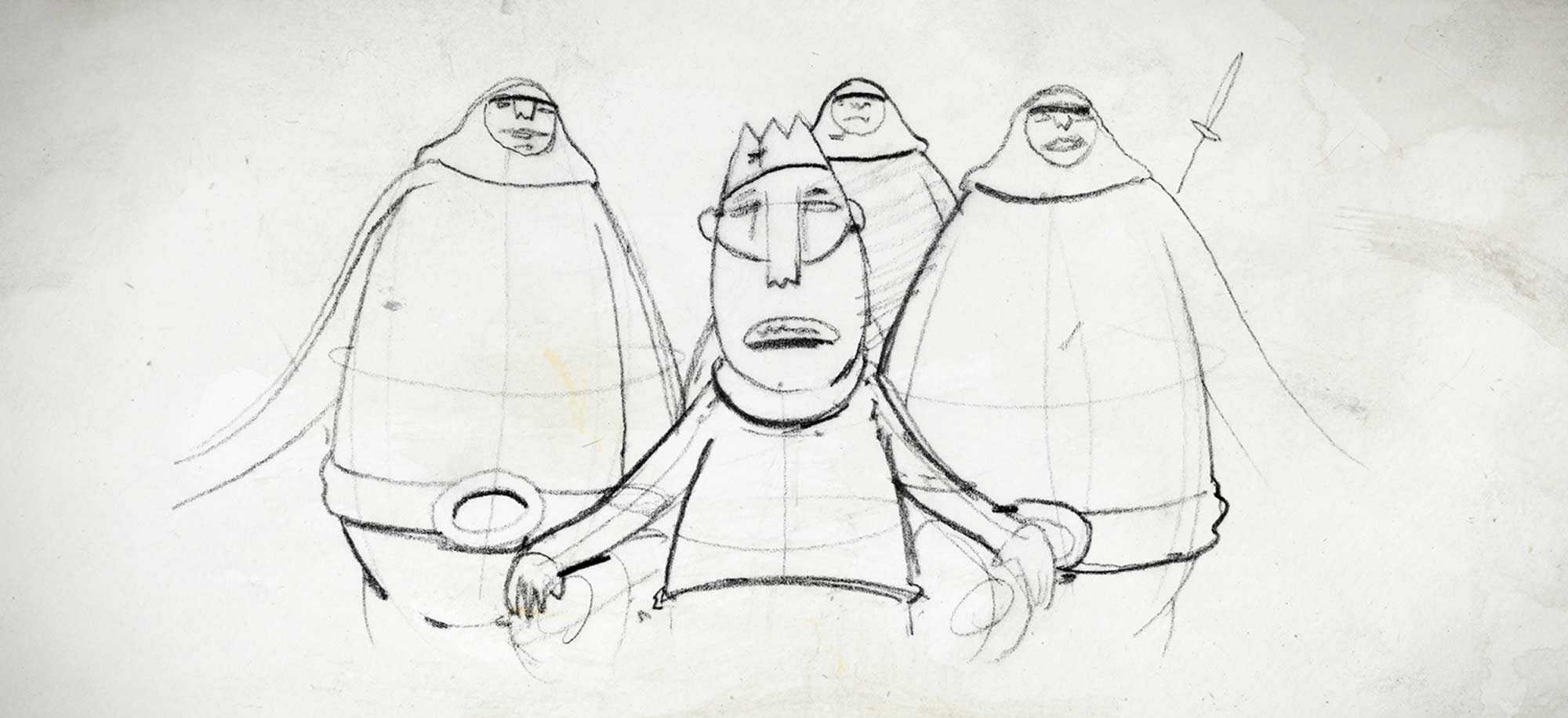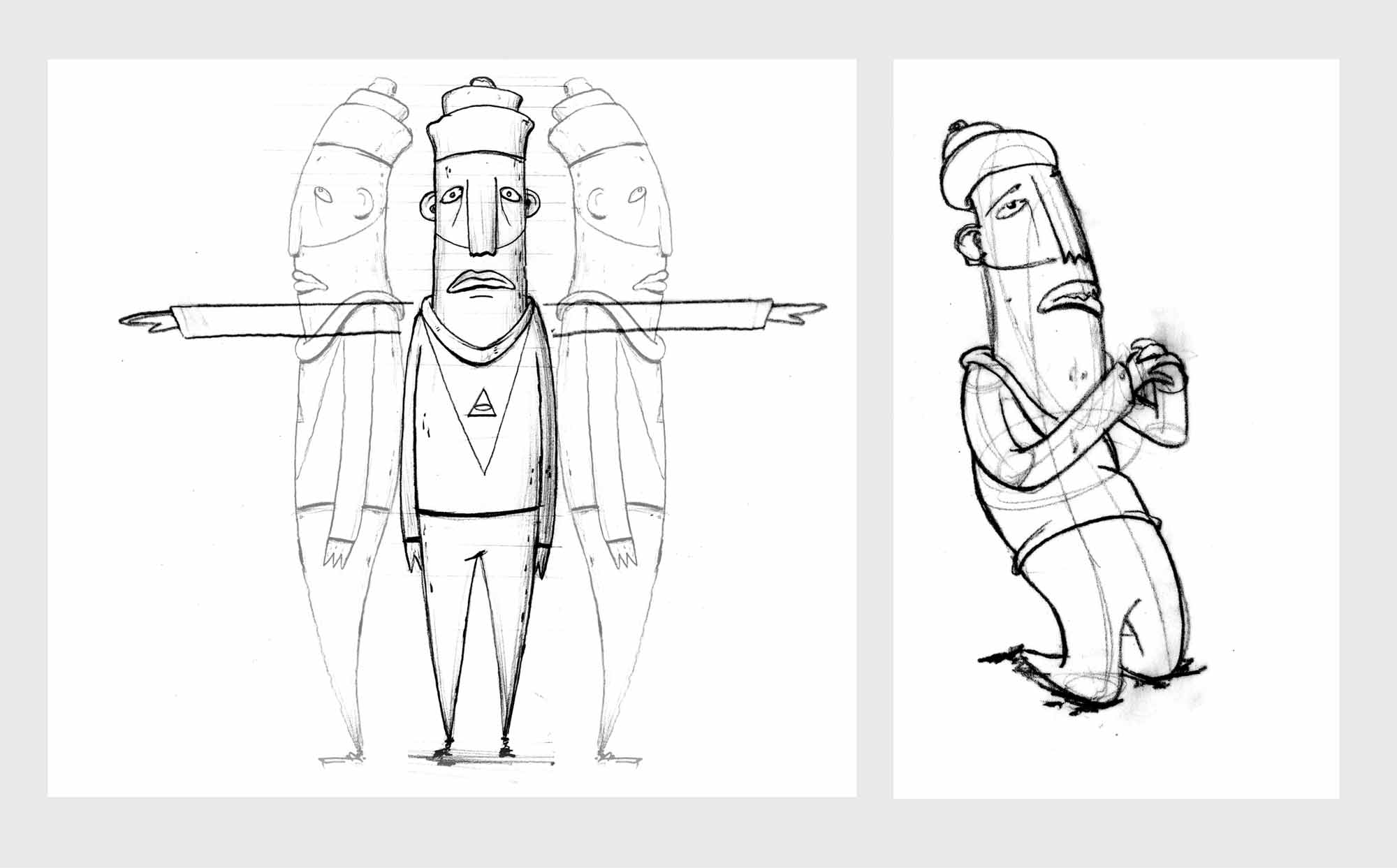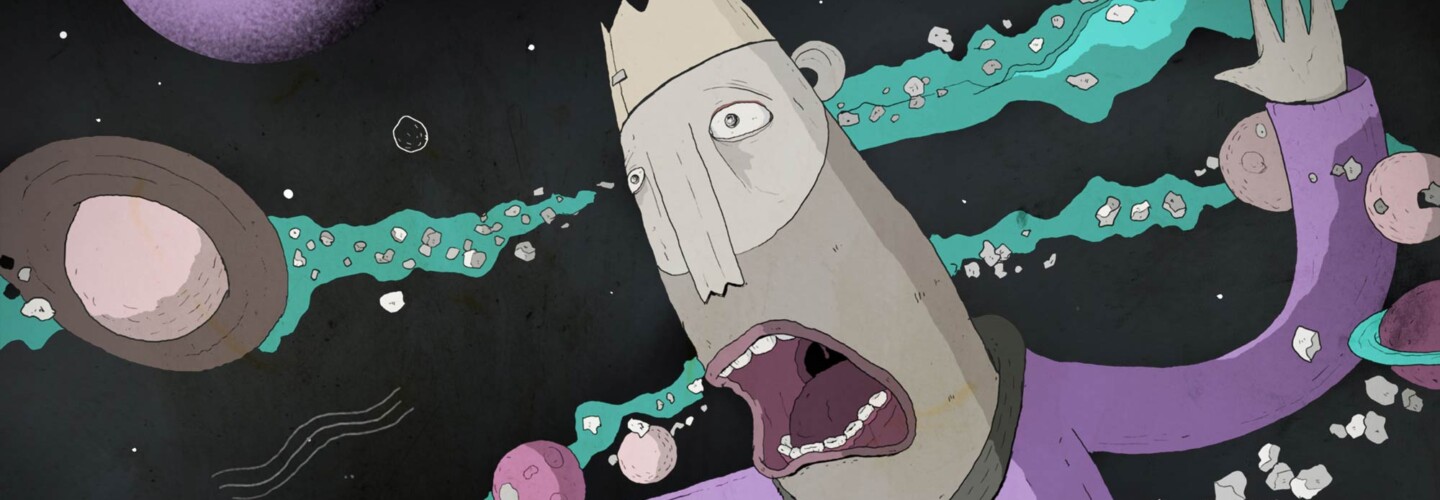
When a megalomaniacal king decides the secrets of the universe should be laid bare before him but the answer to his question proves beyond his reach, a chain reaction of cruelty and madness paves the road to self-realisation in Jakob Schmidt’s dark animation Planemah. DN journeys into the inner workings this trippy animation with Jakob to discover how his allegory about desire, ruthlessness and the complete loss of control came into being.
This dark tale of a ruthless hunt for knowledge is deeply existential in nature, where did it come from?
I tried to create a story in which human weaknesses can be found in different ways and meanings. Some of them in a very overstated and others in a more subtle way. The hunt for knowledge and the aim to find a bigger sense in everything is thereby one of the main themes of the story. I see it as a short comment on the human tendency to self-indulgence and failing.
What was your process when fleshing out that initial conceit during the scriptwriting phase?
When I wrote the script for Planemah I was intrigued by the idea of a protagonist who is seeking for ‘something‘ until he figures out that the answer of his question is inside of himself. This basic idea was finally combined with the story of a character who desperately chases the secrets of his own existence and the universe. The challenge was to combine all these complex parts into a short story. At that point I decided to choose the easy structured narrative form of a fairytale and tried to clash it with unexpected elements such as the music and the design of the characters and the worlds. With the film title Planemah my aim was to create a strange and maverick word fitting the context of the story – ‘Planemah’ is a word construction of ‘Planet nightmare’.

Were there existing stories which provided inspiration?
There was no specific story at all, just fragments I wanted to put into a new context. One source of inspiration was definitely the novel Momo from the German author Michael Ende. There is a character called Gigi who invents a new tale every time he appears in the story. I read that book again when I worked on the script and I tried to get the vibe of these stories into the scriptwriting. If I had to name a visual source of inspiration it is definitely the work of animator Galen Pehrson. I love the dark, strange and trippy dreamworlds he creates in his animations and I tried to transfer the mood of his movies into my short film.
I see it as a short comment on the human tendency to self-indulgence and failing.
How did you bring that all together during production?
Planemah was my graduation project from the University of Applied Sciences in Wiesbaden, Germany. The film production started in December 2014 with the scriptwriting and the first sketches. The animation process and the design of the backgrounds lasted over 4 month and was finished in summer 2015. The animation itself was made with a Wacom Cintiq 22HD and ToonBoom Animate. The backgrounds were made in a mixture of 3D renderings and a post edit in Photoshop which gave them a more handmade and unique look. The animated scenes were drawn on a green screen to combine them with the backgrounds.






After finishing the visual parts of the production I worked together with a Sound Designer called Christoph Hiller. He analysed the characters and cast the actors for the synchronisation. Beside the sound design he also composed the soundtrack for the short film.
What prompted Wacom’s involvement with the film and in what ways did using the Cintiq streamline the animation process?
Before I started with the executive part of the production I sent Wacom a short pitch of my project together with recent works, asking them for a sponsorship. Planemah was my graduation project which had to be finished in about four month (impossible!) I needed a tool to produce the animation very fast. The Cintiq 22HD is perfect for quick frame by frame animations. It can easily be connected with any PC or Mac and it creates a fast and comfortable workflow. For people who don’t know that product, it is a screen which is controlled by a pen. With different pen tips you can simulate different drawing mediums. I guess it’s one of the best alternatives for transferring analogue work into digital and it’s one of the most powerful tools for hand drawn animation.
What new projects do you have planned for the future?
At the moment I’m writing the script for a new short film while working as a motion designer in a half time arrangement. In future I would love to collaborate with a small studio to work on a bigger project and a maybe more effortful production.


